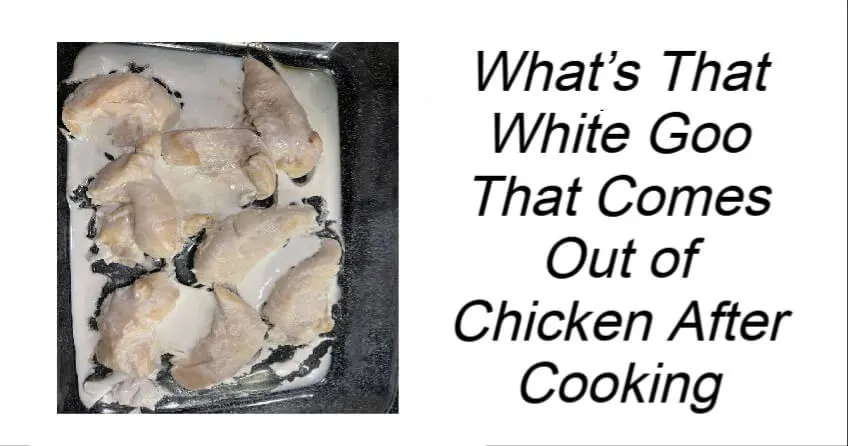What’s That White Goo That Comes Out of Chicken After Cooking
If you’ve ever cooked chicken and noticed a slimy, white substance pooling in the pan or clinging to the meat, you’re not alone. While it might look unappetizing, this is a completely normal, harmless occurrence, and it’s easy to explain.
What Is the White Goo?
The white substance is simply a mix of protein and water that’s released from the chicken as it cooks. When heat is applied, the muscle fibers contract, squeezing out liquid. As the liquid heats up, the proteins solidify and turn white—much like how egg whites change when heated.
Food scientist Dr. Topher McNeil explains, “The [chicken] muscles contract and squeeze out the liquid trapped between the muscle cells.” In other words, the white goo is just a natural byproduct of cooking.
Why Does It Happen?
This phenomenon can occur with any chicken but is more noticeable with frozen or previously frozen meat. Freezing causes ice crystals to form within muscle cells, rupturing the fibers and releasing more liquid when the meat is thawed and cooked. The more times chicken is frozen and thawed, the more noticeable the effect—similar to how frozen fruit leaks liquid when softened.
The Science Behind It
The goo resembles egg whites because both contain high levels of albumin, a protein that coagulates when exposed to heat. “The main protein in egg whites is albumin, which makes up about half of the protein in chicken juices,” culinary experts explain.
Is It Safe to Eat?
Yes, the white goo is completely safe to eat. It’s simply cooked protein and water, even if it doesn’t look very appetizing. However, if the goo has an unusual color or odor, it could indicate that the chicken has spoiled.
How to Reduce the Goo
While you can’t completely eliminate it, there are ways to minimize its appearance:
- Avoid refreezing: Buy fresh chicken or limit how often it’s frozen and thawed.
- Pat it dry: Use a paper towel to absorb surface moisture before cooking, which helps with better browning.
- Cook at a lower temperature: High heat causes muscle fibers to contract quickly, pushing out more liquid. Cooking over moderate heat can reduce this effect.
- Brine your chicken: Soaking it in a salt solution helps retain moisture and reduces the amount of liquid released.
Why Does It Look Worse Sometimes?
Cooking methods can affect how much white goo appears. Overcooking, cutting into the chicken too soon, or using a meat thermometer can cause more liquid to be released.
Other Proteins Do It Too
Chicken isn’t the only protein that releases this substance. Fish, like salmon, also exudes a white protein called albumin when cooked. Similar cooking techniques—lower heat and slower methods—can help minimize this effect in other meats as well.
If the white goo bothers you visually, you can easily scrape it off with a butter knife or blot it away with a paper towel without affecting the taste of your dish.
No Need to Worry
Although it might not be the most appealing sight, the white goo is a completely natural part of cooking chicken and doesn’t pose any health risks. Dr. McNeil reassures, “Go forth and cook your chicken without any fear of the mysterious white goo.”
You’ve just read, What’s That White Goo That Comes Out of Chicken After Cooking. Why not read Lady Accidentally Farts In A Car Showroom.

